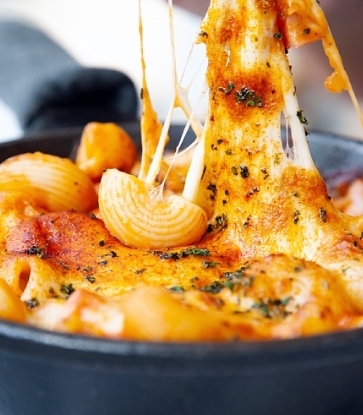We might know gelato in its rich creamy form today, but the origins of this Italian frozen treat dates back thousands of years to when Romans began the ritual of eating crushed ice covered with honey.
Florence-born designer and architect Bernado Buontalenti is also a name that comes up when looking into the discovery of gelato. Known for his design of villas and gardens – the palace of Bianca Cappello in Via Maggio is an example – Buontalenti was asked by the Medici family in the late 1500s to prepare an awe-inspiring feast for the visiting King of Spain. His creation: an icy sweet treat made with the use of some salt (to lower its melting point), sugar, egg and honey. The cold cream, flavoured with bergamot and orange, became known as gelato.
As restaurateurs and other gelato-makers moved around the world, gelato soon spread throughout other parts of Europe and the world.
While many will use the terms gelato and ice cream interchangeably, the former is Italian for “frozen” while the latter is an American term. It is said that gelato first made its way to the US in 1770, brought over by Italian immigrants. Changes in technology led to Americans cranking out this frozen treat more easily, which also marked the start of industrial ice cream production.

Both processes begin with pasteurisation of the milk and cream, then left to age over time for science magic (read: chemistry) to happen.
Air in frozen sweets is known as "overrun", the percentage ice cream expands due to air incorporation during freezing. For example, a 1-litre liquid mix that ends up as a 2-litre tub of ice cream has an overrun of 100% (equal parts air and liquid). Soft serves and industrial ice creams tend to have very high overruns of 100% or more, while the overrun is usually 30% for gelato. This means gelato ends up thicker in texture compared to ice cream.
At popular gelato joint I-Scream in Hong Kong, Italy-born Paolo Predonzan churns out flavours unique to the cosmopolitan city. Hong Kong-style milk tea, white bean curd, and even mooncake are some examples. His favourite? Maotai liquor, as it has a distinct taste profile and it is always challenging to create an alcoholic flavour.
This, he does in the traditional style of gelato-making that he picked up while working for Arturo, a gelato master in Austria who owns one of the top five gelato shops in Vienna.
Says Predonzan: “How do we define “traditional gelato”? In my opinion, two main requisites are required: The use of fresh and real ingredients, not pre-packed flavouring mix, and it has to be done in small batches."
Large industrial-type freezers that artificially pump air into the gelato will, he shares, create a spongy and unpleasant texture.
"If the only goal is to make profit and rationalise the production, we would only be eating cheap, industrial-produced ice cream that tastes the same everywhere," says Predonzan. "Gelato is food, and in the same way a good chef can guarantee an uniqueness to his dishes, a traditional gelato provides a typical and unique experience that an industrial product simply cannot deliver."












